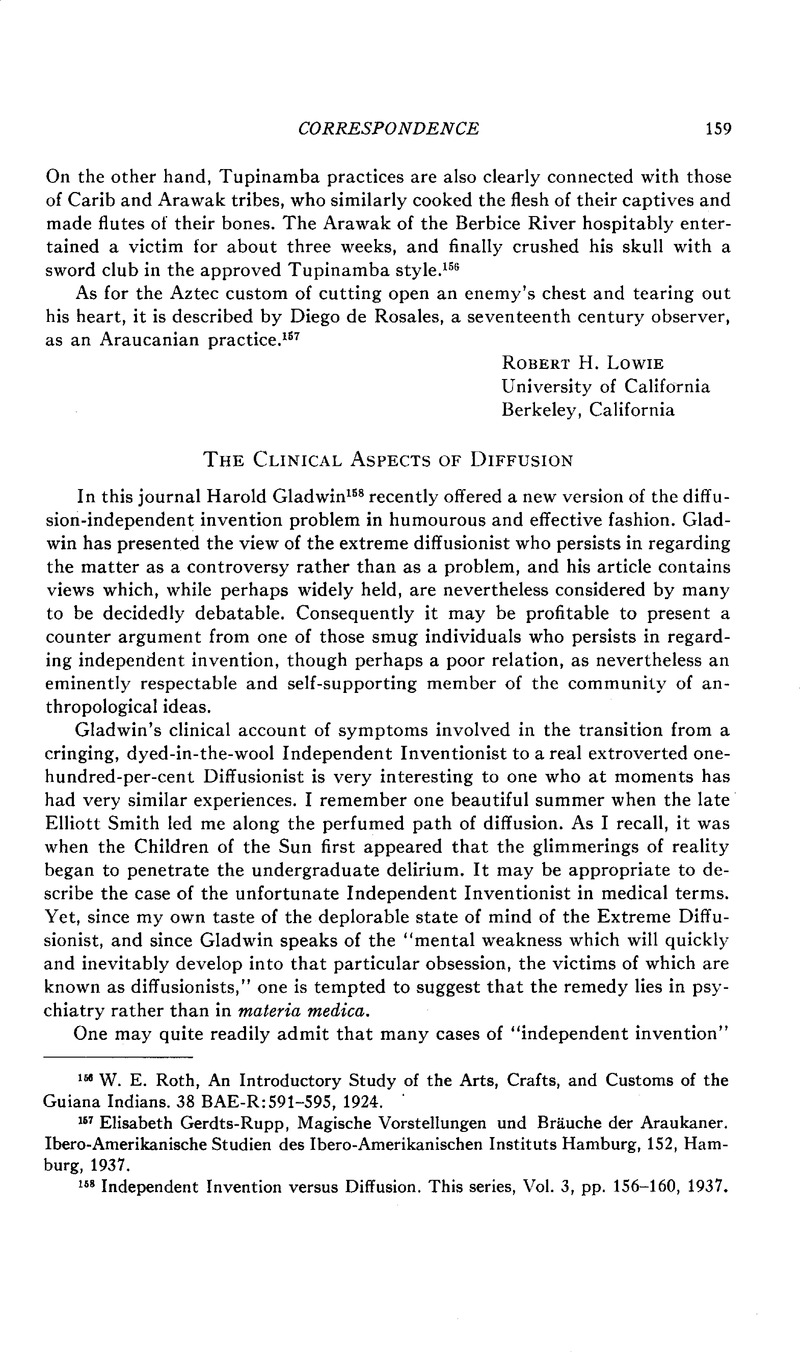No CrossRef data available.
Published online by Cambridge University Press: 25 January 2017

158 Independent Invention versus Diffusion. This series, Vol. 3, pp. 156–160, 1937.
159 Gladwin presents a curious viewpoint when he speaks of “Pygmies, Negritos and Papuans” having “about as much culture as a frog has feathers.” It would seem that the ardent labors of Margaret Mead and Messrs. Fortune, Malinowski, Rivers, Schebesta, Sterling, Thurnwald, and Williams, to mention but a few, have been quite wasted. Are we to consider their bulky monographs fictional? Or can it be that the criteria of culture are to be conceived of purely in terms of stone axes, pottery, loom weaving, stone architecture, and the like?
160 Robert H. Lowie, The History of Ethnological Theory, New York, 1937, p. 74.
161 I am assuming that the botanists are reasonably correct with regard to a Middle American origin for these plants. Gladwin may not agree.
162 One wonders with whom Gladwin associates to make him react so violently against the idea of the racial homogeneity of the American Indian. If the idea is common, one must share his shocked attitude. In my own experience, even before Hooton published “The Indians of Pecos,” emphasis was always laid on the wide variability of the American Indian. Of course, the theoretical assumptions back of Hooton's interpretation of Negroid, Australoid, and other features are, I believe, questioned by some physical anthropologists. But discussion of this is outside the scope of the present article.
163 J. Alden Mason, Observations on the Present Status and Problems of Middle American Archaeology, Part I. American Antiquity, Vol. 3, p. 206, 1938.
164 A. V. Kidder, Speculations on New World Prehistory. Essays in Anthropology in Honor of A. L. Kroeber, Berkeley, 1936
165 Lowie, op. cit., p. 253.
166 Ibid., p. 75.